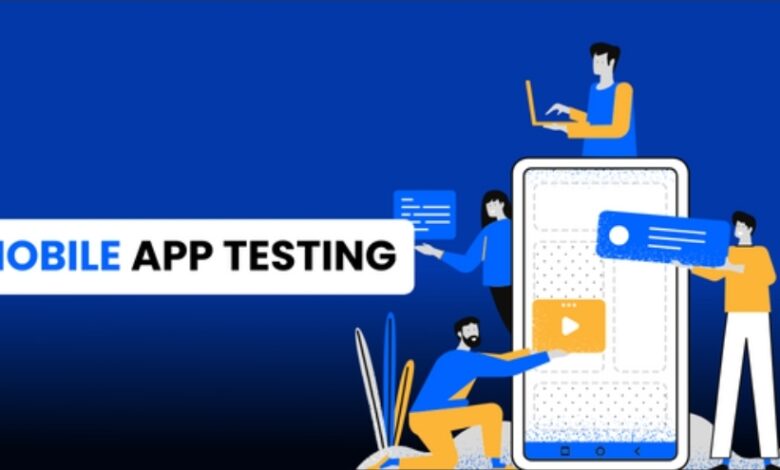Mastering Mobile App Testing with our Bulletproof Testing Approach

Do you know that only 14 of every 100 business applications come out with flying colors? Meanwhile, users abandon 25 per cent of the applications after just one trial. So, the question arises: why do mobile applications fail? Various factors contribute to this, including a lack of research, poor user experience, and a lack of originality. However, improper testing emerges as one of the most prominent factors for their failure.
According to a study by IBM approximately 70 percent of mobile apps have at least one critical security vulnerability. That not only creates performance issues but also frustrates users. Consequently, leading them to abandon the application. Further, vulnerabilities also pose a significant threat to users’ privacy—for example, the 2014 security breach of Snapchat. Where hackers exploited a vulnerability in Snapchat, exposing 4.6 million users’ information
Thus, if you want your application to be successful in this digital domain, where approximately 4000 mobile applications are added to the Play Store daily, robust testing is the only way. This blog provides a comprehensive roadmap for testing mobile applications across different platforms.
10 Step approach to Mobile App Testing
Step 1 – Prepare Your Strategy
Before testing your mobile app, it’s crucial to create a strategy. Start by figuring out what you want the app to achieve. Set clear goals and criteria for testing and outline how to achieve them. Remember that this strategy acts as a blueprint and will guide you through the entire testing process. It helps determine the type and extent of testing needed, along with the tools and methods to use. Thus, this roadmap ensures that your efforts align with the app’s objectives. It also enhances the efficiency and effectiveness of the testing process. That ultimately contributes to the overall success of your mobile application.
Step 2: Build Your Test Team
Next, figure out how many testers you will require for the execution of the test. Also, ensure that they have the right skills that align perfectly with your plan. The team’s composition should match the app’s complexity and associated risks. Consider the functional details, performance factors, and the diversity of users. Remember, the number and expertise of your testing team play a crucial role in the thorough examination of your application. It also gives you the flexibility to examine the various aspects of the application, such as functionality, performance, and user demographics.
Step 3 : Choose a Testing Device
Now, after team formation, it’s time to decide how you want to test your application. You can use either an emulator, a real device or a simulator, depending on your preferences and budget. Each testing device has its pros and cons. For example, real devices are great because they let you test things like special features on mobile hardware. Emulators, on the other hand, can be handy in the beginning stages of testing. They’re like virtual versions of devices. If you want to make sure your app works smoothly on actual phones or tablets, real devices are the best options. But if you’re just starting and want a quick check, emulators can do the job. So, it’s about picking the right tool based on what stage you’re at and what you want to focus on.
Step 4: Define the Testing Type
Now, the fourth step is to choose the testing plan for your application. Make sure that your testing plan covers everything so that nothing is left out. It should include automated testing with minimal human interactions. Along with the traditional manual testing for discovering complex issues. Remember, your goal must be to ensure that your app works well across all the platforms. By creating an equilibrium between manual and automated testing, you can confirm that your app performs well on different devices and OS. It’s like a thorough check-up of your application before it reaches the end user. This way, you make sure your app not only does what it’s supposed to but also does it well across various devices.
Step5 : Define the Test Cases
Test cases help you check how your app responds to different situations and users’ actions. Thus, they are like a guide that confirms that your application is performing as intended in various conditions and user actions. It consists of pre-conditions, inputs, and actual outcomes. A test case is critical because it ensures that your application is not only reliable but also user-friendly. To create a robust test case for your application, you must identify all the essential functionalities. Next, you must prioritize them depending on their importance. It must not only be based on your application’s requirements. But also acknowledge your targeted audience and user persona. At the same time, your test case must cover all the functionalities across all devices and OS.
Step 6: Perform Functional Testing
Now, it’s time to test the functionality of your application. You can do this by performing a functional test. It will help you to ensure that the app meets the user’s expectations. The functional test compares each function with the user’s expectations. The functional test consists of various tests like unit tests, regression tests, smoke tests, and usability tests. Before executing the test case, you will have to create input values for the unit under test. Next, depending upon the input, you will have to determine the outputs. The last step is the comparison between the actual output and the predefined output. This way, users get the experience you intended for them, and your app performs its primary job smoothly and effectively.
Step 7: Perform Usability Testing
Usability Test helps in understanding how people move around in the application. It helps us to look at the information from our user’s perspective. It’s like seeing the app through their eyes. Thus, the usability test ensures that your application is not only user-friendly but also enjoyable. It tests the application in real-world scenarios by mimicking actual user action.
Step 8 : Perform Performance Testing
As the name suggests, performance testing evaluates the quality of your application. It considers the application in terms of stability and responsiveness. It further helps you identify any bottlenecks that hinder app performance. The first and most critical step is to identify the testing environment. Next, you must define the performance goals that also act as the success criteria. Afterwards, configure the test environment and implement the test design. Finally, run the test and analyze the data. The main objective of this test is to determine the performance of the application under the expected workload.
Step 9: Perform Security Testing
Before the final launch of the application, it is vital to keep your app safe and secure. This means making sure that hackers can’t mess with your app and that it meets the standards for keeping information safe. It’s like putting a solid lock on your front door to prevent unwanted guests. By testing for vulnerabilities, you ensure your app’s integrity and trustworthiness.
Step 10 : Generate and Analyze Reports
Once all the testing is completed, it’s time you document your testing process and results. The test report ensures that all the stakeholders are on the same page. Thus, it offers a way to share all vital information among your team members. The test report must answer three essential questions such as what was tested? How was it tested? And Why was it tested?
Conclusion
A meticulous testing strategy is the key to success in this digital landscape. Our comprehensive roadmap will guide you through the complexities of the testing journey, from laying the foundation to assembling a skilled testing team or selecting suitable testing devices. This guide provides you with in-depth knowledge for steering your app towards success. As the digital realm continues to evolve, embracing this approach not only fortifies your app against potential pitfalls but also fosters a user-centric and reliable experience. Embrace the principles outlined in our guide, and confidently steer your app towards triumph in the competitive and ever-changing landscape of mobile applications.




